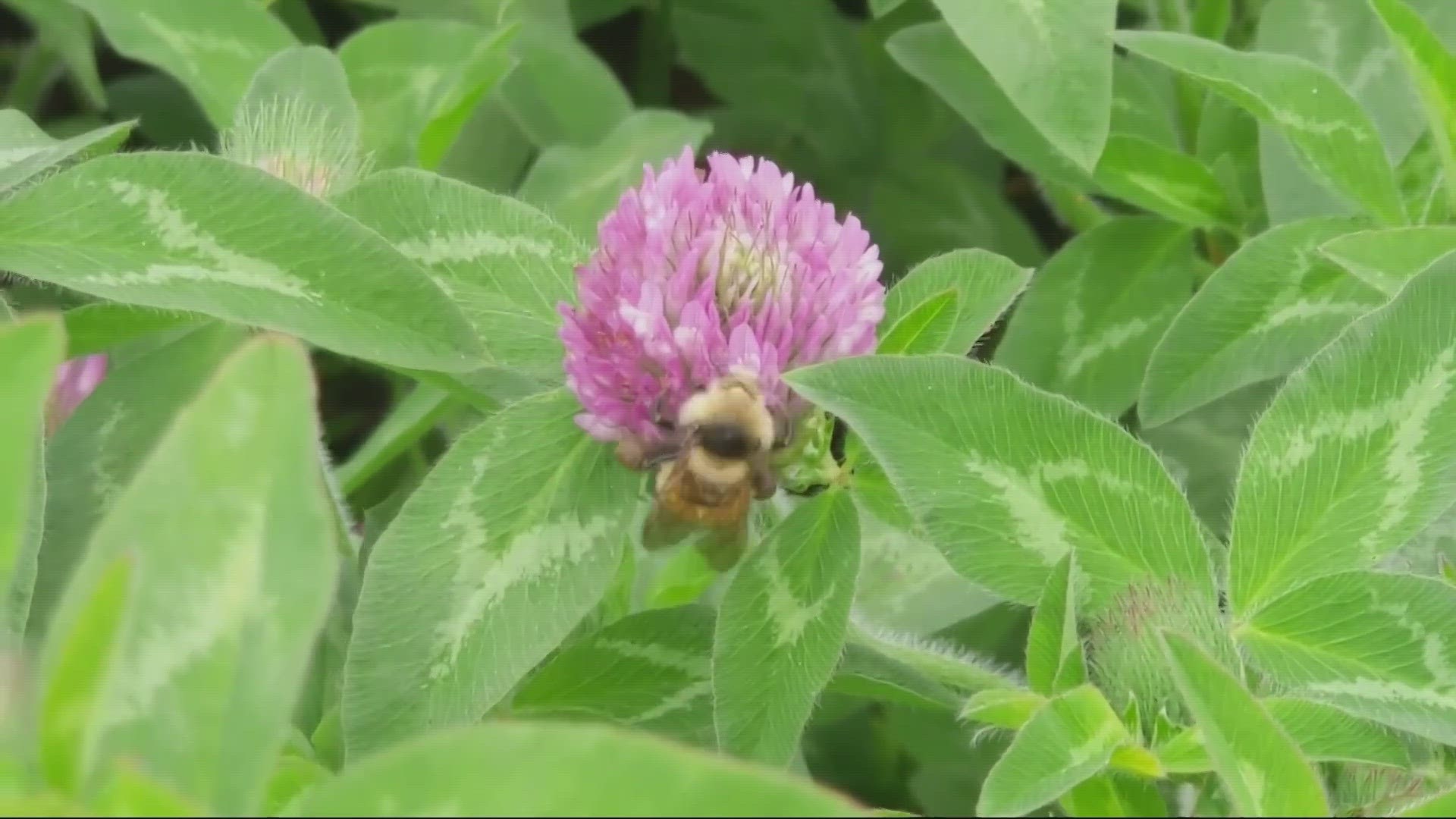PORTLAND, Ore. —
It’s clear that Stephen Paisley enjoys what he does.
“This larger one is a female, and the smaller one is a male,” Paisley said as he held a box of small, brown mason bee eggs next to a nest at Willamette Valley Vineyards, south of Salem. “There’s a full adult bee in each one of these.”
A retired electrician, Paisley has found a second calling caring for mason bees, and his affection for the tiny creatures is unmistakable. Bees tend to be the unsung heroes of the agricultural economy, providing crucial pollination to many common foods.
Given their importance, it’s confounding to Andony Melathopoulos, a professor of horticulture at Oregon State University, that the status of Oregon’s roughly 800 species of wild bees is relatively unknown.
“For many of them, there's so little data we can't even track if there's been a decline,” he said.
Honeybees rebounding
Wild bees are distinct from the much more common European honeybees. Honeybees are widely used by farmers to pollinate crops, and are an integral aspect of some of Oregon’s most lucrative agricultural products, from alfalfa and carrots to sweet cherries and Hermiston’s famous watermelons.
"Having a a large supply of bee colonies is critical for all those crops,” Melathopoulos said.
About 15 years ago, some European honeybee colonies saw precipitous declines in what would come to be known as colony collapse disorder. Those declines drew warranted concern from the public, Melathopoulos said.
Honeybee keepers are still struggling with pests, disease and climate change — dryer and hotter summers often mean less nectar for bees — but there's actually some good news: even though the narrative of their decline persists, honeybee populations have rebounded in recent years.
Melathopoulos said at this point he's more concerned about wild bees than honeybees, because while researchers have a good sense of how honeybee populations are doing, there isn't enough data available to monitor wild bees, or even to know if they're in decline.
Wild bees unknown
Oregon is home to a wide variety of wild bees, from the jovial-looking bumble bee to the alfalfa leaf cutter bee to Paisley’s favorite mason bees.
It’s also home to one of the rarest bees: Franklin’s bumblebee, which only lives in a small area straddling southern Oregon and northern California. The bumblebee hasn’t been seen since 2006 and is listed under the Endangered Species Act.
What is clear, Melathopoulos said, is that habitat for many of Oregon’s wild bees is shrinking.
Planting flowers and building nests for mason bees will help by allowing the public to learn about bees, Melathopoulos said, but larger-scale solutions are needed to actually make a dent in the problem.
“The biggest thing that people can do, I think, is really try and support farmers and other land managers who are trying to put big tracts of flowering plants in the landscape," he said. "Utility companies, golf courses, forest companies — that's where we need it.”
Back at Willamette Valley Vineyards, Paisley stood proudly next to the mason bee nest he maintains there, explaining how the bees use mud to protect their eggs from predators.
The winery is hosting a mason bee tour and tasting on Saturday, which also happens to be Earth Day, for the public to learn about the insects and how they benefit people and the environment.
The mason bee eggs had yet to hatch as of early April, but warmer weather should coax the bees from their cocoons soon, Paisley said.
“Hopefully when it gets to 55 next week they’ll start emerging,” Paisley said.

